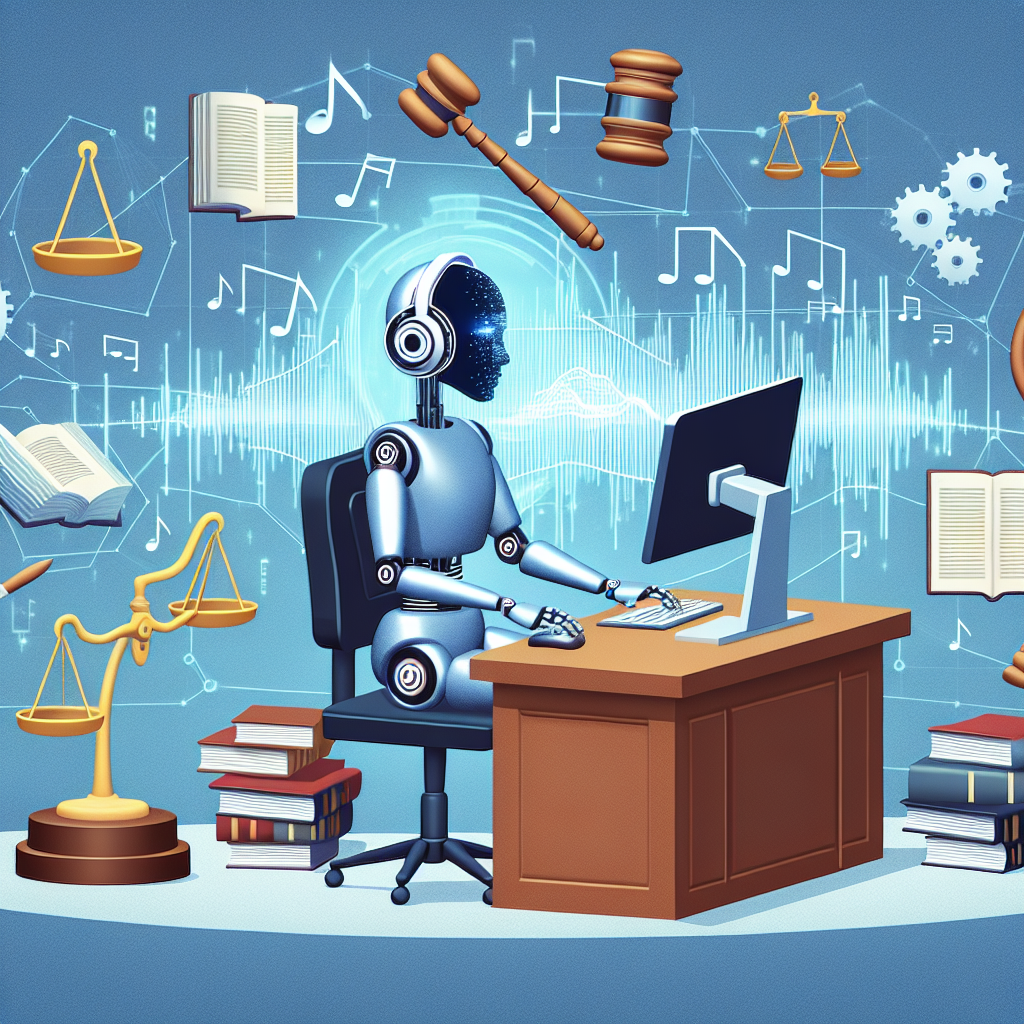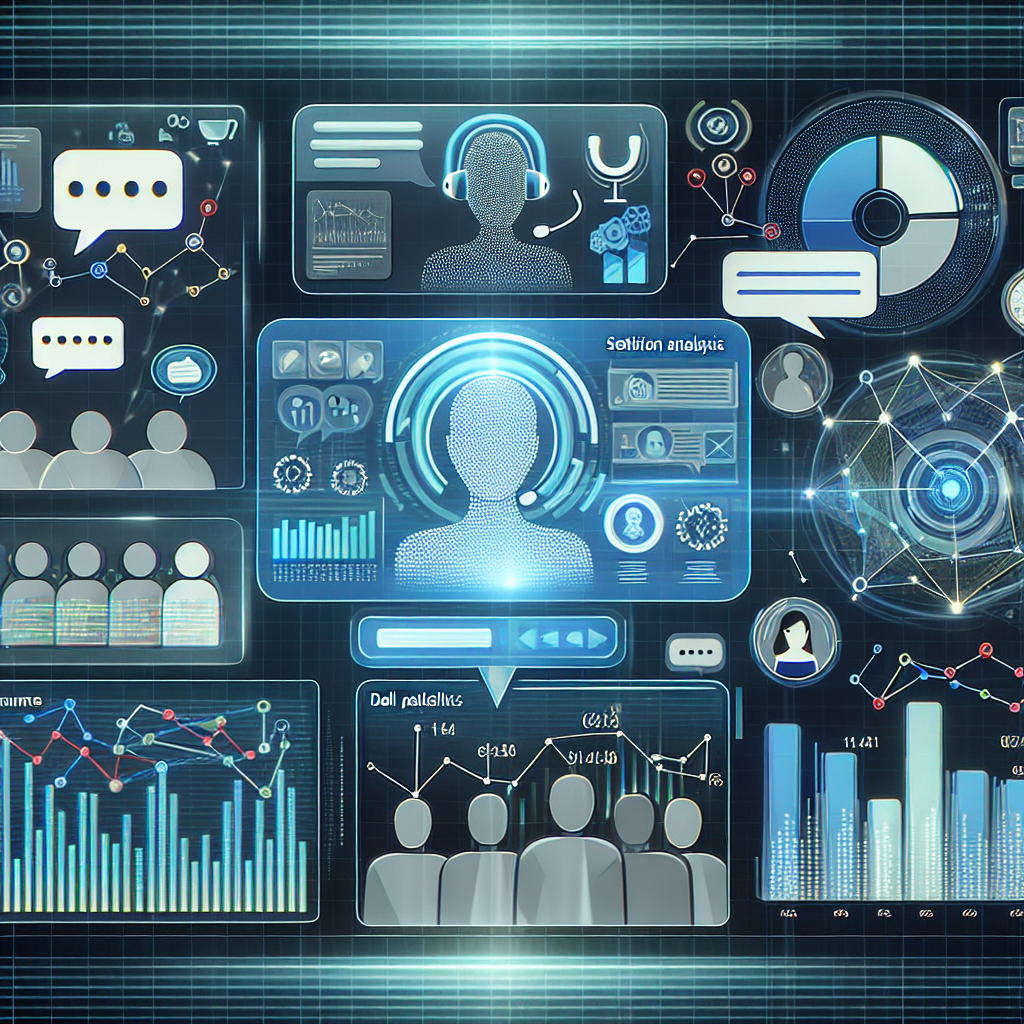
In the era of digital communication, unequivocal adherence to legal regulations is paramount. This especially concerns industries dealing heavily with voice communications - be it customer service departments, call centers, or regulated businesses such as healthcare and finance. The catch is the sheer volume of calls which makes manual monitoring of compliance virtually impossible. Enter Artificial Intelligence (AI). AI is increasingly leveraged for automated detection of potential legal issues in recorded calls, ensuring seamless alignment with laws like the General Data Protection Regulation (GDPR) and the Health Insurance Portability and Accountability Act (HIPAA).

AI-powered systems such as speech recognition and Natural Language Processing (NLP) convert spoken language into written text, establishing a comprehensive dataset ready for further analysis. This text is scrutinized for potential breaches of personal data protection, unauthorized disclosures, or simply inappropriate communications. The AI conducts its mission with exacting precision, attentive to every word, tone and context, 24/7. With AI, businesses meet the stringent requirements of legal compliance much more efficiently than through human monitoring.
Significant penalties await those failing to meet standards outlined by governing entities such as the European Union's GDPR and America's HIPAA. These regulations mandate the protection of personal data across all digital platforms including telephonic conversations. GDPR alone can impart fines up to €20 million or 4% of a company’s global turnover, depending on which is higher.
Adopting AI for automated detection of potential legal issues in recorded calls is no longer a novelty; it’s a necessity in our data-driven world. Armed with AI, businesses can ensure compliance accuracy, mitigate risks, reduce costs, and enforce a high level of data security and privacy for their clients. Indeed, in the face of stringent legal norms and hefty penalties, AI provides the very lifeline needed to stay afloat in the sea of legal compliance.
Artificial Intelligence (AI) has made it possible for businesses to identify and rectify potential legal issues within recorded calls effortlessly, protecting them from any unforeseen legal complications. However, how does the system actually accomplish this? The automated detection of potential legal issues essentially relies on three AI mechanisms: speech recognition, natural language processing, and pattern detection.
Firstly, the use of speech recognition technology enables the AI to transcribe spoken language into written text. This serves as the baseline for detecting potential legal violations during the extraction of conversational data from audio files. Speech recognition is not merely about transcribing words; it is about transcribing context, taking note of alternating speakers, tone, and pauses within a conversation.
Secondly, Natural Language Processing (NLP) algorithms are applied. NLP is a field of AI that enables machines to understand, interpret, and generate human language. The AI uses NLP techniques to scan the transcribed text for any phrasing or terminology that could potentially lead to legal infractions.
Finally, pattern detection comes into play, where the AI looks for specific patterns or anomalies within the conversation that could indicate legal risks. It learns from previous legal issues and employs this knowledge to identify potential future risks. The whole process is continuously fine-tuned based on regulatory updates and proper feedback loop.
Relying on these three pillars, AI offers an efficient and precise system to detect possible legal risks in recorded calls, safeguarding businesses from future legal fallout. Molded through the feeds of thousands of calls, this technology ensures businesses stay ahead in mitigating possible risks and address documented issues proactively.
As technology continues to break barriers in the business world, one tool that has recently shown promise is automated detection of potential legal issues in recorded calls. Essentially, this technology, supported by sophisticated Artificial Intelligence (AI), is capable of spotting and flagging any potential legal problems that could emerge in the course of phone conversations. However, the adoption of such an advanced tool brings with it several legal and ethical considerations.

The first question that most businesses ask is: "Is it legal to record and monitor phone calls in the first place?" The answer depends on the specific legal frameworks governing the monitoring of communications in the concerned jurisdiction. Different countries have varying regulations around privacy and monitoring, and some require consent from all parties involved in the communication process. Therefore, before implementing an AI monitoring solution, businesses must familiarize themselves with the laws that apply to their operations.
Furthermore, the businesses implementing AI monitoring solutions must adhere to not just the laws, but also ethical obligations while handling sensitive data. Data protection regulations, such as the European Union's General Data Protection Regulation (GDPR) have strict rules regarding the collection, storage, and use of personal data. These can impose severe penalties on organizations that fail to comply, adding a layer of risk to the recording and monitoring of communications.
In conclusion, while AI-powered tools for recognizing potential legal issues in recorded calls can provide immense benefits to businesses, it is vital to balance the use of these high-tech tools with adherence to the legal and ethical frameworks that govern communication monitoring to ensure lawful and respectful use.
The revolution of Artificial Intelligence (AI) has offered us innovative tools and systems, capable of performing tasks proficiently without continuous human intervention. One such example is using AI to detect potential legal issues in recorded calls which is continually gaining momentum in the business world.
AI-enabled monitoring systems can significantly improve the efficiency and reliability of legal compliance processes. They have emerged as a definitive measure to assure that a business's recorded calls conform to the prevailing legal standards and ethical norms.
The implementation of such tools is not as daunting as it may seem. Many companies, like IBM and Microsoft, offer advanced solutions for automated monitoring of calls. But, just acquiring these tools does not ensure legal conformity. The accuracy and integrity of these AI systems depend heavily on the quality and relevance of input data. Thus, it would be beneficial to develop in-house protocols for recording calls, making sure they are clear, succinct, and pertinent.
Moreover, attention must be given to the privacy rights of customers while recording and processing their calls. Customer consent must be taken, and the reason for recording calls should be clearly communicated. Only then can the monitoring systems' results be legally binding and ethically sound.
Another important aspect is the training and regular updating of these AI models. The training data set must encompass a variety of cases, including false positives and negatives, to ensure the models can adequately recognize the nuances of potential legal issues.
To conclude, AI-enabled monitoring systems offer promising solutions to ensure legal compliance in business operations. However, it requires careful planning, regular updating, and rightful consideration of privacy rights. The integration of these systems must be a well-thought-out venture, emphasizing both legal and ethical considerations.
Artificial Intelligence (AI) has brought a paradigm shift in various industries, notably in the realm of compliance practices. Two case studies exemplify the remarkable potential of AI in detecting potential legal issues in recorded calls.

Our first case study involves a motor trade company faced with the challenge of ensuring Data Protection Act (DPA) and General Data Protection Regulation (GDPR) compliance in their customer-call handling process. The call recordings often contain personal data, and without proper handling, can lead to significant legal consequences. By utilizing AI-based software equipped with natural language processing and automatic speech recognition, the company could identify potential DPA and GDPR breaches in real-time. Proactive actions were taken, and the company managed to avoid penalties while significantly improving their compliance culture.
The second real-life example is a multinational banking corporation. They had a massive volume of recorded calls, which made manual monitoring a daunting task. But, implementing an AI-driven solution allowed the bank to analyze the calls for potentially problematic language and topics, such as unfair treatment and fraud, in a scalable manner. This automated detection system enhanced the efficiency and accuracy of the bank's routine compliance practices without adding excessive manpower costs.
These examples from contrasting industries show the versatility and scalability of AI in streamlining compliance processes. AI’s capability to add efficiency and precision to legal issue detection can benefit any sector dealing with recorded calls. As we move forward, the spread of AI is expected to reshape practices, bringing about a new era of compliance founded on innovation and automation.
Interested to know more about how AI can reshape your compliance practices? Check out our other articles on demystifying artificial intelligence in legal domains.
The advent of Artificial Intelligence (AI) in the realm of legal compliance presents a promising future equipped with technological advancements and new opportunities. The role of AI transcends mere automation and ventures into comprehension and intelligence.
One of the essential applications of AI is the automated detection of potential legal issues in recorded calls. As businesses record millions of calls daily, AI technologies have emerged as a viable solution to facilitate legal risk management by detecting non-compliance during these call recordings automatically. Such technological initiatives reduce the risk of legal disputes and fines, contributing significantly to organizational cost savings.
Machine learning and natural language processing, subcategories of AI, have shown immense potential in automated call analysis. They not only detect potential legal issues but also help understand the customer's mood, improving customer service along the way.
Looking ahead, the future of AI in legal compliance is set to become even more dynamic. Advances in AI may lead to a higher accuracy in detection, broadened scope of definition for potential legal issues, and shortened response times. However, the rapid pace of AI advancements comes with its unique set of challenges. The primary hurdle is the disparity in the legal landscapes of different countries, posing a challenge to tweak the AI system accordingly. Furthermore, maintaining the privacy and security of recorded calls will continually remain an uphill task.
On a concluding note, the AI phenomenon in the field of legal compliance showcases a promising future with numerous benefits and potential advancements. The challenges it presents in its wake, like privacy concerns and legal disparities, are hurdles that, if thoughtfully addressed, can pave the way for a new era in legal risk management.
Start your free trial for My AI Front Desk today, it takes minutes to setup!








